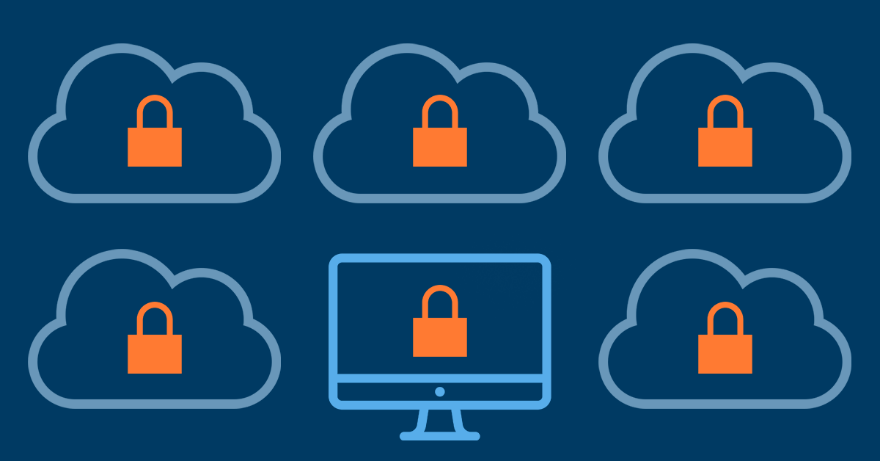This post will show you how to protect SaaS applications against Ransomware.
SaaS adoption is growing at a faster rate than ever, with a Deloitte survey from the end of 2018 revealing that a massive 93% of respondents reported that they were adopting or at least considering cloud computing, with over half expecting to use cloud software for mission-critical applications over the next three years.
Even though businesses are increasing the overall trust they place in these cloud applications through their daily use, users are still expressing security concerns over the data they are storing within and transmitting through the cloud.
Although accidental deletion is the leading cause of data loss within SaaS environments – a more easily compatible risk through improving internal policies – this is closely followed by Ransomware, a much more aggressive and unpredictable threat.
This article will discuss the rise of Ransomware, the threat this poses to your SaaS applications, and clear, actionable steps to secure your environment, such as cloud-to-cloud backup or security awareness training.
READ ALSO: Your Essential Ransomware Guide: Prevention, Detection, and Recovery
Table of Contents
How do Businesses use SaaS Apps?
Before diving into the growing ransomware threat, we first need to establish how organizations use SaaS technology to understand the associated vulnerabilities.
Although the same few prominent providers might come to mind when considering SaaS applications – such as Microsoft, Adobe and Salesforce – most businesses use department-specific apps without realizing it.
The average company with 200 to 500 employees uses about 123 SaaS apps regularly, making application management a daunting task.
The Threat of Ransomware
After years of making headlines, Ransomware remains one of the most damaging threats to organizations globally. Recent studies show that 85% of managed service providers named Ransomware the most common malware threat to their clients in the last year, with 1 in 5 SMBs falling victim to an attack. But how does this affect cloud users?
In 2018, 44% of scanned organizations had some form of malware in at least one of their cloud applications, and as the most common form of malicious software, Ransomware is likely to make up most of these numbers. With how drastically SaaS adoption has grown in the few years since this, experts are warning users to prepare for an upsurge in cloud-targeting Ransomware in the coming year.
READ ALSO: How to Protect Your Computer from Ransomware: Essential Security Measures
Infiltrating the Cloud
Typically, ransomware attacks infiltrate cloud applications through social engineering campaigns delivered to users via email. These emails use varying tactics to manipulate recipients into opening malicious attachments or links, often by impersonating trusted services or personal contacts.
From here, just like any other ransomware attack, the attauser'sompromises the user's device key, making all of their importfilesiled inaccessible until a ransom is paid – but when the user in question is connected to the cloud, the threat doesn't end there.
Hackers can spread the impact to more users within the company by uploading an infected file to the cloud. This can be done in two ways; either the hacker can sit back and allow a tool like Google & Sync or Office 365 Sync to do the work for them automatically, or if the user does not have file synchronization, they may use their social engineering tactics to get their hands on the targettargetinntials, compromising their account and uploading the corrupted file manually.
From this point the malware has the potential to encrypt every file within the cloud storage, as well as the on-premises data of any users who try to download the infected files.
“Cloud-computing organisations have an environment that is not only likely to be hosting a lot more data than those working strictly on-premises, but it also creates an easy path for criminals to spread the threat through the whole network by weaponizing shared files.
For attackers looking to create the biggest impact, and thereby claim the biggest ransom, it is certainly in their best interests to have their sights aimed at the cloud, and the fast rate of SaaS adoption is only going to bring them to this realisation sooner.”Ben Carr, Technical Services Manager at Altinet UK
Protecting Your Cloud Environment
Due to the complexity of Ransomware attacks and the fast-changing nature of the tactics involved, there is no single solution to securing against the threat – instead, ad users must follow recommended best practices and consider adopting a multi-layered security salongsideprotect their data at every entry-point.
Below are various suggested steps that, when actioned along-side each other, make up a highly effective strategy for mitigating the ransomware threat for your SaaS applications and cloud-hosted data.
READ ALSO: 3 Critical Cybersecurity Questions To Ask Before Buying a Marketing SAAS Product
Keep Track of Your Apps
SaaS providers take full responsibility for monitoring applications for vulnerabilities and patching them through completely automated updates – o, you have nothing to worry about, right?
Not exactly. As previously highlighted, the average company uses over 100 SaaS applications, and many users fail to consider that these services can eventually shut down and – just as we're doing with Windows 7 at the moment – this means that the provider is no longer ensuring these applications are free of vulnerabilities.
It outlines clear security policies that ensure the IT team approves all new cloud applications and is regularly monitored to avoid this scenario.
Security Awareness Training
With Ransomware being most commonly introduced to companies through social engineering – a tactic that relies solely on user error through manipulation – the most effective solution for preventing the threat is to regularly train your users on how to effectively identify and respond to suspicious emails that show signs of containing malware.
Identity & Access Management
To minimize the impact that a successful Ransomware infection could have on a company, admins should define access rights according to user roles and responsibilities, segmenting the network into smaller, similar groups so that any single affected user cannot lead to a company-wide data compromise.
Cloud-to-Cloud Backup
Cloud-to-cloud backup solutions are purpose-built for SaaS environments and involve securing data by backing it up from one cloud to another. Most C2C Backup solutions include point-in-time retrieval, meaning that in the event of an attack, users can delete the encrypted files and restore a version before the attack.
How To Protect Your SaaS Applications Against Ransomware: FAQs
What is the best way to protect against ransomware attacks?
A layered approach combining various security measures is most effective:
- Strong Passwords and MFA: Implement robust password policies and enforce Multi-Factor Authentication (MFA) for all SaaS applications. This adds an extra layer of security beyond just a password.
- User Awareness Training: Educate employees on recognizing phishing attempts and social engineering tactics commonly used in ransomware attacks.
- Regular Backups: Regularly back up your critical data stored in SaaS applications. Ideally, store backups offline or in a separate cloud storage solution to ensure they are not compromised during an attack.
- SaaS Provider Security Features: Many SaaS providers offer built-in security features like data encryption, access controls, and anomaly detection. Please familiarize yourself with these features and utilize them effectively.
- Security Software: Consider implementing endpoint security software on devices used to access SaaS applications. This can help detect and block malware that might attempt to encrypt your data.
Can cloud providers prevent ransomware attacks?
Cloud providers offer a certain level of security for hosted data but cannot wholly prevent ransomware attacks. Your responsibility lies in securing your access and data within the SaaS application.
How do organizations protect against Ransomware?
Organizations can protect themselves from Ransomware through a combination of the following strategies:
- Vulnerability Management: Regularly update software and operating systems on devices that access SaaS applications to patch known vulnerabilities that attackers might exploit.
- Access Controls: Implement granular access controls within SaaS applications, granting users only the permissions they need to perform their tasks. This minimizes the potential damage if an account is compromised.
- Incident Response Plan: Develop a clear incident response plan outlining the steps to take in case of a ransomware attack. This plan should include procedures for isolating the attack, notifying relevant authorities, and restoring data from backups.
What are ransomware protection practices used to protect the application data?
Here are some specific ransomware protection practices focused on application data:
- Data Encryption: Encrypting your data at rest and in transit adds an extra layer of security, making it more difficult for attackers to decrypt it even if they gain access. Some SaaS providers offer data encryption options, while others might require you to implement encryption solutions.
- Data Loss Prevention (DLP): DLP solutions can help prevent sensitive data from being accidentally, maliciously leaked, or exfiltrated from SaaS applications.
What is the first action to take against Ransomware?
The first action to take depends on the specific situation. However, some general steps include:
- Identify and Isolate the Threat: Identify the infected device or application and isolate it from the network to prevent the Ransomware from spreading.
- Disconnect Infected Devices: Disconnect any infected devices from the internet to prevent further communication with the attack attackerattackattackers'nd overs.
- Assess the Damage: Evaluate the extent of the attack and determine what data has been compromised.
- Report the Attack: Report the ransomware attack to the relevant authorities and your SaaS provider.
- Restore from Backups: If possible, restore your data from clean backups to recover from the attack.
By implementing these security measures and being prepared to respond to an attack, you can significantly reduce the risk of Ransomware impacting your SaaS applications and minimize potential damage.
Was this helpful?
RECOMMENDED POSTS
- Best Antivirus For 2022
- The Ultimate Antivirus Software Guide
- 3 Critical Cybersecurity Questions To Ask Before Buying a Marketing SAAS Product
- Implementing SaaS Security – A Checklist
- Cybersecurity Strategies To Protect Your Critical SaaS Data
- 5 Adoption Strategies For Zero Trust
- The Role Of Data Retention Policies In Cybersecurity Preparedness
About the Author:
Daniel Segun is the Founder and CEO of SecureBlitz Cybersecurity Media, with a background in Computer Science and Digital Marketing. When not writing, he's probably busy designing graphics or developing websites.
Christian Schmitz is a professional journalist and editor at SecureBlitz.com. He has a keen eye for the ever-changing cybersecurity industry and is passionate about spreading awareness of the industry's latest trends. Before joining SecureBlitz, Christian worked as a journalist for a local community newspaper in Nuremberg. Through his years of experience, Christian has developed a sharp eye for detail, an acute understanding of the cybersecurity industry, and an unwavering commitment to delivering accurate and up-to-date information.







